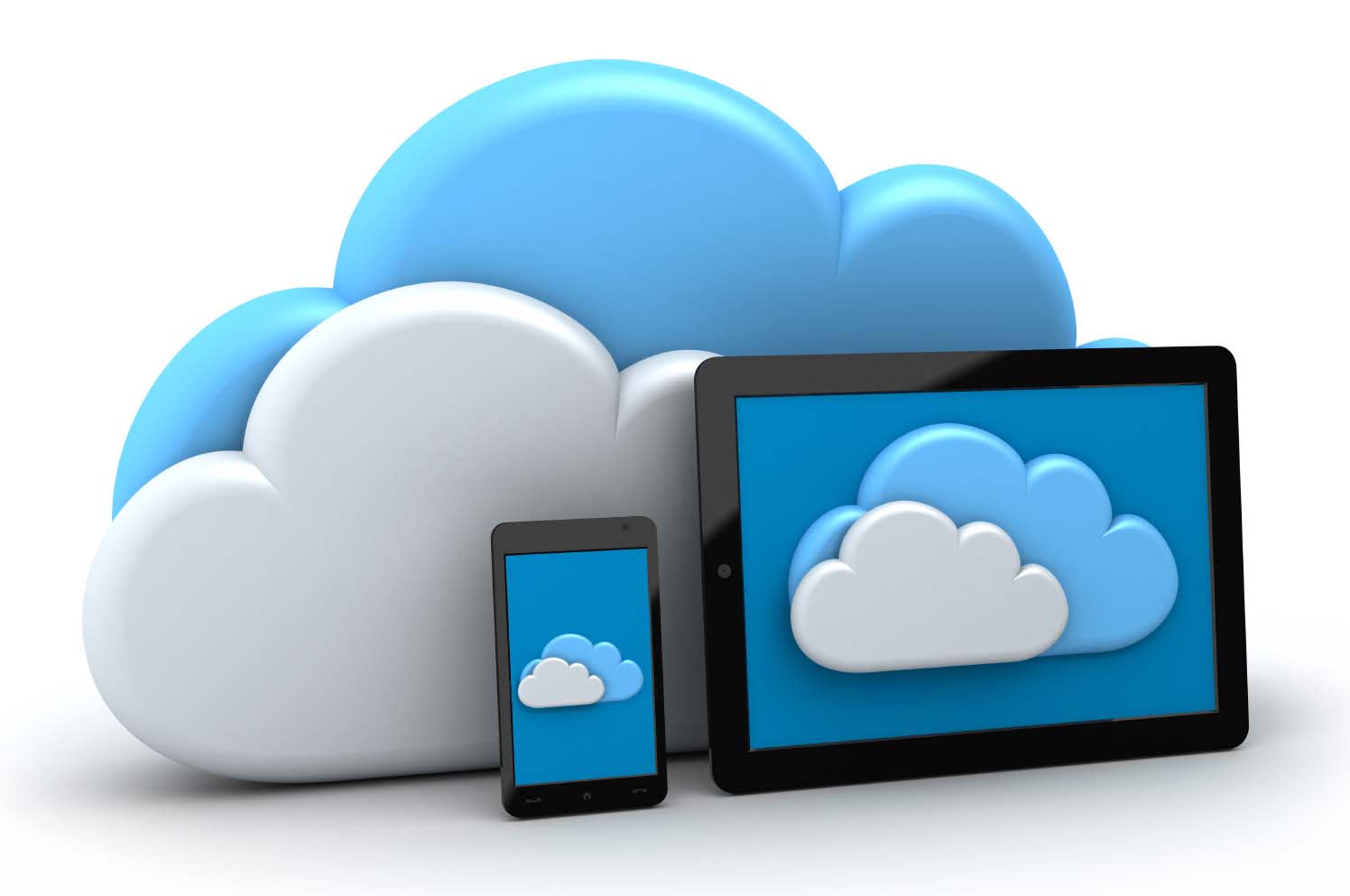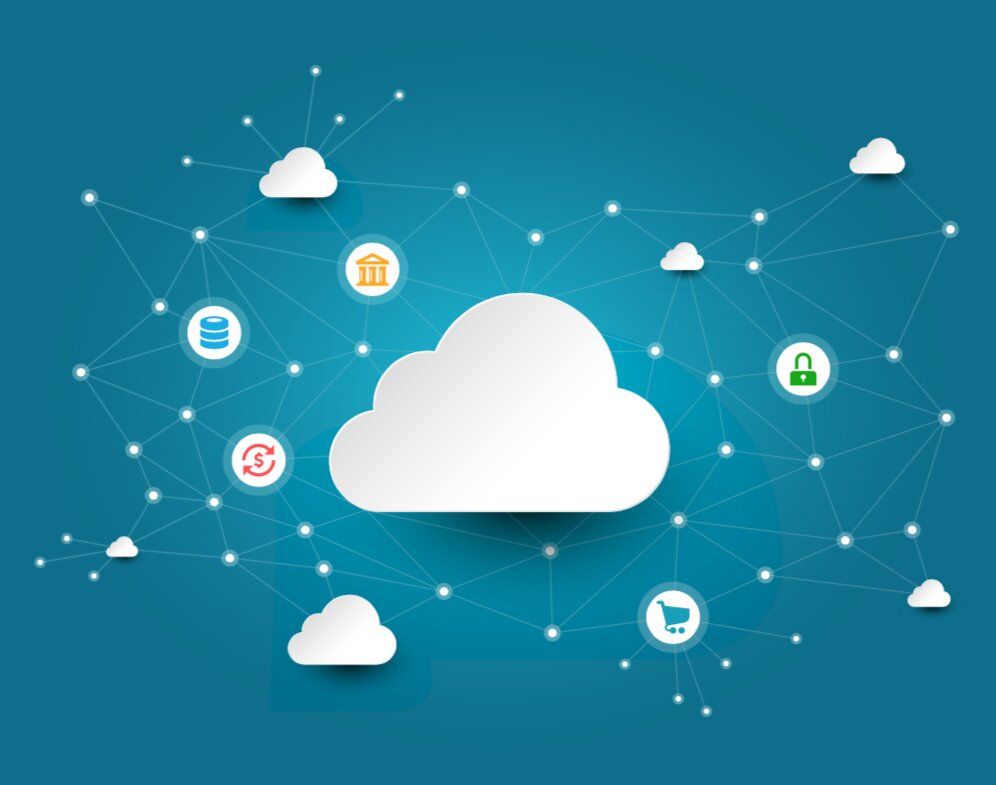How many of us would not like to fly above the clouds? Now we can do it at internet speed! With this article you will know what is cloud computing. Enjoy the trip!

What is cloud computing?
The domain of information guides the use of technology, especially in the era of the digital paradigm in which we find ourselves.
Since the birth of the Internet, there have been many advances that have taken place within the communication channels of the virtual environment. One of its greatest exponents is what we know today as cloud computing.
The first idea for this concept was born when computer specialists began to represent the internet connection with a cloud. Their idea was to symbolize the interconnection of several computers with the network of networks, as a channel for the flow of information. But really, what is cloud computing.
It is a technology, information and communication service that allows access to a set of computer resources through the Internet. These resources include: networks, servers, memory, virtual machines and applications, among other services.
Features
- The client pays, depending on the time and use of the contracted service.
- Most of the contracted resources are kept separate from the client's computer equipment.
- The services offered by the provider are tailored to the customer's needs.
- The optimization of resources guarantees their availability.
- It is a digital service. Therefore, intangible.
- The client does not need servers or own networks.
- Access to services by the client is automatic when required.
- The request for services does not involve human interaction with the provider.
- The client can access the service from any geographic location with internet availability.
- Access to the services is not restricted to any device with an internet platform, such as mobile phones or laptops.
- The client does not need to know the physical location of the service provider.
- The services offered are convenient for the user, and profitable for the provider.
- The services are offered in three modalities and four forms of implementation.
Services
Based on its characteristics, the main benefits of cloud computing are:
- Accessibility to desired performance and memory.
- Cost reduction, consequence of saving in licenses, service administration and equipment.
- Global energy savings due to the reduction of watts consumed by the equipment in use.
- Compliance with privacy standards and computer security regulations.
- Protection of the content of the industries, preventing the illegal copying of, for example, music, videos and movies.
- Wide and varied range of services.
- Ease of contracting and payment support.
- Wide capacity for technological support and advice.
- It promotes innovation and the use of new technologies.
- Any person or company that wants to offer its services in the cloud is free to do so.
Risks
Like any technological tool, despite its benefits, network computing also has its disadvantages.
- Dependence on the internet connection, due to possible failures in the network servers.
- Information leakage caused by the large volume of stored data.
- Vulnerability of sensitive data to computer attacks.
- Dependence on the provider, a consequence of the characteristics of the services.
Area of application
Due to the technological revolution that has been developing in recent years, today there are many areas that make use of cloud computing.
Although it is true that at first there was some reluctance on the part of some sectors, who saw bandwidth as a limitation. The truth is that today, both public and private organizations have put their entire trust in the exponential growth of this wonderful tool of modern computing.
Its main clients include the financial and business sector, the national and international government, the area of innovation and technology, the health, education and culture sectors, the economic and public services sectors, among others.
Each of these sectors has incorporated important changes in the way they work, due to the wide variety of services that continue to appear with this innovative technology.
Antecedente
It can be said that the best and oldest exponent of this type of service is email. Although it still requires the use of the internet, today, shared computing resources are being used better.
Service Models
The three service modalities offered by cloud computing are usually grouped under the same SPI name: Software, Platform and Infrastructure. Below, we detail each of these models separately:
SaaS
It is also often referred to as Software as a Service. The service provider provides the end user with applications already running in the cloud. The client accesses these services through an interface, available on any device with internet access. Generally, access is automatic, through a username and password established by the client. The user is unaware of the infrastructure that makes it possible to enjoy the contracted service.
PaaS
In the platform as a service, the provider allows the user to develop applications, through the use of tools and programming languages present in the cloud. Storage and operating systems, owned by the service provider, cannot be managed by the customer. It can only control application environment settings.
IaaS
It's about infrastructure as a service. In it, the consumer is given the opportunity to process and store computational resources on the network. The user can run the software of their choice, including operating systems and applications. You do not have control over the cloud infrastructure, but you can manage both the operating systems, the storage and the underlying applications. The customer only pays for the time and resources actually used.
Deployment models
Four implementation models are differentiated, according to the target of users to whom the services are directed.
Private cloud
Cloud infrastructure is generally implemented, used and managed only by the contracting user of the service, although it supports the same by a third party. It can work with the computing resources located in the physical facilities of the client or outside of it.
Public cloud
Cloud infrastructure is accessible to large specific industries. It involves wide access to the network by the general public, through the Internet or virtual private networks. This virtualization allows many servers to be treated as one.
Community cloud
The infrastructure is available to public of interest, who have common requirements or purposes. They can manage cloud resources directly or through a third party. It can work on your own premises or off site. Promote cross-cloud collaboration.
Hybrid cloud
The network infrastructure is shared by several clouds, linked by proprietary or standardized technologies. None of these entities lose their unique identity, but you can benefit from the advantages that each cloud offers separately. This leads to the acquisition of additional features by each user.
Service providers
According to the service models offered, the main cloud computing providers are:
Oriented towards the end user (SaaS)
- Google Apps: Group of applications that facilitates the organization of work and communication, through the use of tools, both planning and task management.
- Salesforce: Tool mainly oriented towards customers, through which you can keep a record of all the activities that are carried out, such as opportunities and deals.
- Dropbox: Provides the opportunity to access a hard drive or virtual folder from any computer. Requires file syncing.
- Zoho / Work on line: It is a processor that allows you to create combined documents. It is fully compatible with Microsoft Word.
Developer Oriented (PaaS)
- Windows Azure: Enables the opportunity to develop or run applications within the cloud.
- Force.com: Tool that simplifies the development and deployment of mobile applications and web sites on the web. Its main objective is to help workers be more productive with respect to their customers.
- Google App Engine: Designed to facilitate application development according to customer needs. It allows the use of various programming languages. Additionally, it provides protection through so-called Firewire.
- Heroku: Run customer applications in real-time environments. Supports various programming languages.
Oriented towards system programmers (IaaS)
- Amazon Web Services: Represents one of the most varied platforms within the cloud, such as messaging, databases, artificial intelligence, among others.
- Right Scale: Its main objective is to sell software for the management of computing resources in the cloud, aimed at multiple users.
- GoGrid Beta: It is a reliable and solvent service. Compatible with Linux and Windows, which is responsible for offering a variety of computing tools, through various protocols.
Tools
The main cloud computing tools available in the market as a direct consequence of the relationship of providers mentioned above are;
- Doodle: Basically, it is an online planner. This automated tool allows you to make calls and organize meetings.
- Padlet: Through this tool the user can store and share multimedia content. Mainly, insert images, documents, audios, videos and presentations.
- Google Calendar: It is an electronic agenda and calendar through which events can be shared. In order to make the invitations, the synchronization of the Gmail contacts is required.
- Google Drive: Provides a large amount of free storage. It integrates with Gmail, Google Drive and Google Photos, in such a way that all types of files can be stored and shared.
- Evernote: It is a computer resource that allows you to organize personal information through the notes file. It is compatible with various operating systems.
- Dropbox: It works as a hard disk or virtual file, which allows you to share files remotely.
- Owncloud: Similar to Dropbox: Allows you to store and share files in the cloud. For its execution, it requires their synchronization. Once shared, the files can be accessed from any device with an internet connection.
- Zoho: Tool with sharing functions that acts as an online word processor.
Example
The main elements that a cloud computing application must have are:
- A data system that simulates the information of the application.
- An interface, or user screen medium, that summarizes and displays the data and functionalities once the session has started.
- Interrelated logic and workflow to execute specific tasks.
If you have a food sales company, and you want to create an inventory management system, the main work tool you have is the invoice issued by the company. The number of items sold and the amount obtained from the sale are reflected.
Based on the information provided by the invoices, an application model and a data system are created to track the behavior of the groceries. The pre-existing cloud user interface is then modified, according to company specifications and application logic. In such a way that a series of reports and reports can be obtained that help to know the current situation of the business. This facilitates decision making.
The creation of a cloud computing application requires enrollment in a multipurpose environment. Which allows, through functions and permissions, to develop, test and run computing applications on the network.
Once the application is created in the cloud, it is compatible with websites and mobile applications, which allows interaction with other people and the sharing of data between them. In addition, a high level of data protection is obtained and access to certain users is defined.
You also have the ability to interact with external systems, and to continue creating and installing packaged applications.
Conclusions
- Cloud computing is a technology, information and communication service, offered through the internet.
- It is a friendly, accessible, dynamic, versatile, flexible and low-cost technological tool.
- SaaP is geared towards the end consumer. It offers already finished applications that can be enjoyed automatically.
- PaaS allows program developers to create their own application.
- IaaS provides standardized infrastructure services, through the virtualization of computing resources.
- The public cloud offers services for several clients at the same time.
- In the private cloud the services are controlled by the provider.
- The community cloud is geared towards stakeholders.
- La hybrid cloud allows interaction between multiple proprietary clients.




